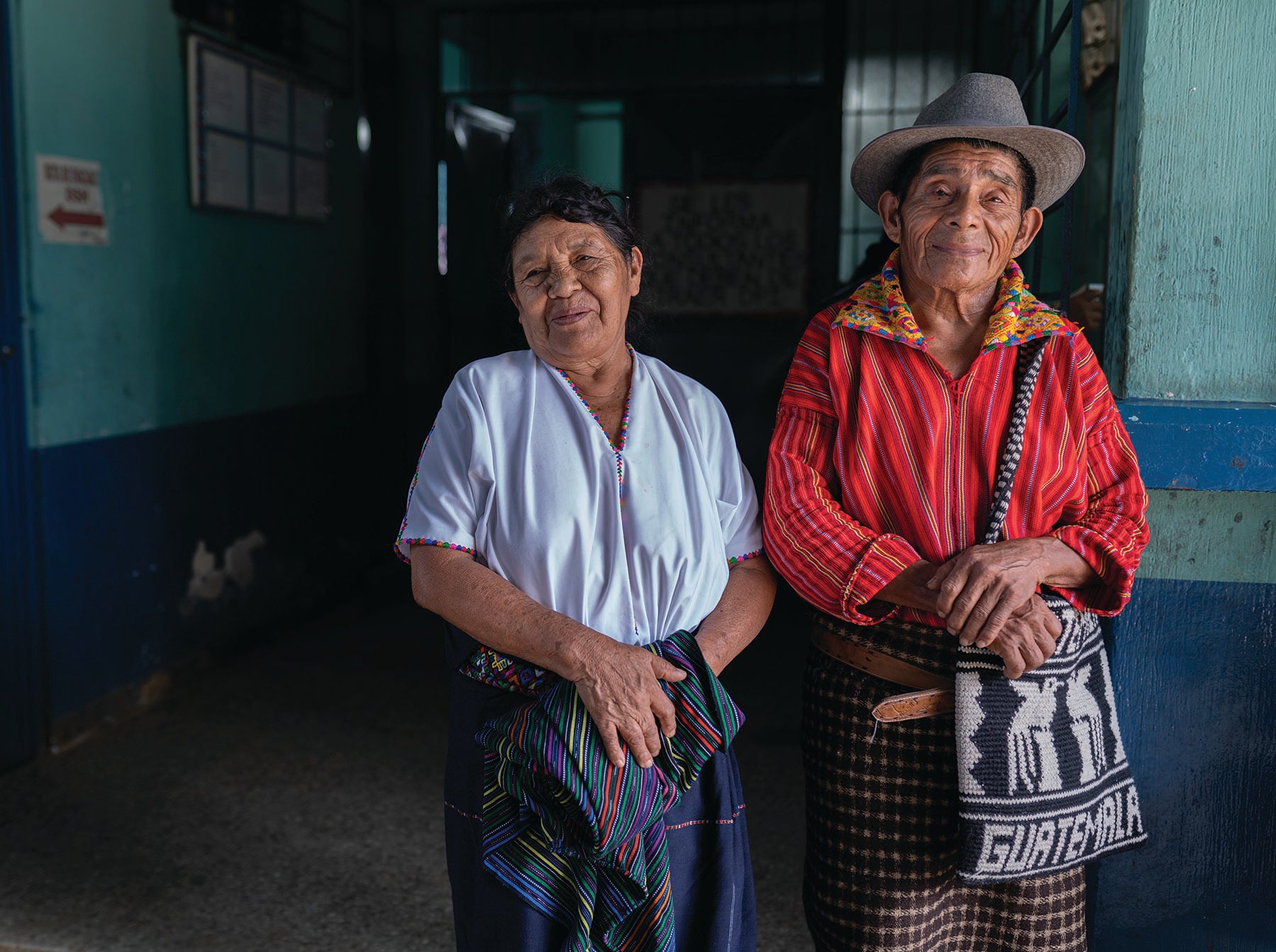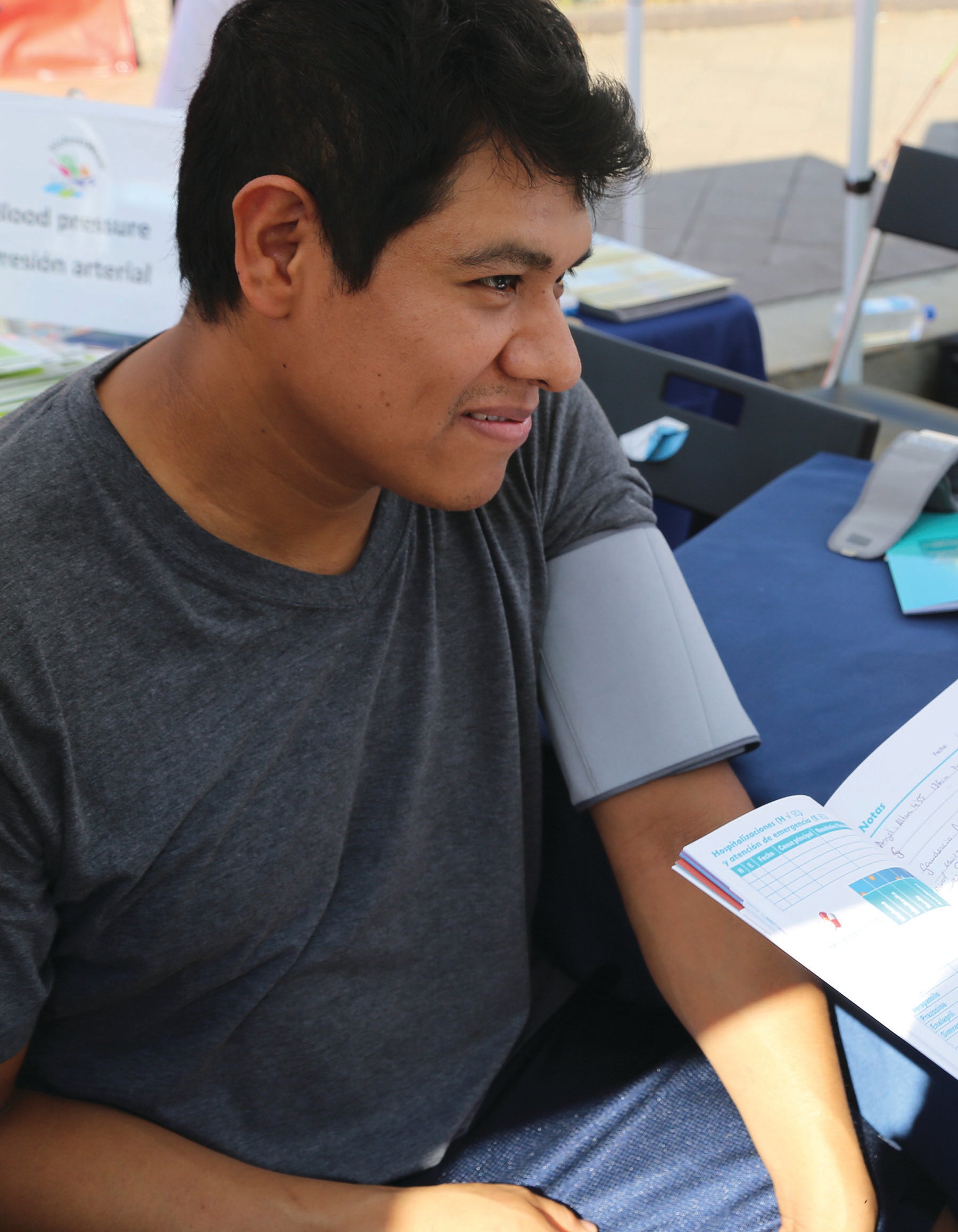Executive Summary
Background
The report analyzes life expectancy and mortality in the Americas for the period 2000–2019,exploring the burden of disease throughout the life course and with a focus on noncommunicable diseases (NCDs), encompassing mental and substance use disorders, neurological conditions, and external causes.
Life expectancy and mortality
A long-term decline in mortality has led to consistent improvements in life expectancy for women and men across the globe. In 2019, life expectancy for people in the Americas was 77.2 years, up from 74.1 years in 2000 and exceeding the global average by 3.9 years, equivalent to an average increase of 8 weeks per year between 2000 and 2019. However, this was the lowest annual increase of all World Health Organization regions. Moreover, in 2019, people in the Americas on average spent 14.2% of their lives in less than full health.
The total number of deaths per year increased from 5.46 million in 2000 to 7.16 million in 2019, a rise of 31% – a larger percentage increase than in any other WHO region. Overall, NCDs dominated as a cause of death in the Americas, with a mortality rate of 412 per 100 000 in 2019 for women and men combined.
NCDs dominated as a cause of death in the Americas
Mortality and disease burden across the life course
The report focuses on six broad causes of death and disability in the Americas: cardiovascular diseases (CVD), cancers, respiratory diseases, diabetes, mental health and neurological conditions, and external causes (injuries from unintentional and intentional causes).
In 2019, CVD and cancers collectively accounted for 47% of all deaths, while mental and substance use disorders and neurological conditions accounted for 16% of all healthy years of life lost. The relative importance of diabetes and of mental and substance use disorders and neurological conditions as regional causes of lost life and lost health increased.
The above six groups can be divided into 57 individual causes. Among these, ischemic heart disease (IHD), strokes, and chronic obstructive pulmonary disease (COPD) have dominated regional deaths since 2000, although the relative importance of Alzheimer disease and dementias, drug use disorders, and injury from falls have increased markedly. Eight different cancers ranked in the top 20 causes of death, while IHD ranked first as the leading cause of disease burden.
Cardiovascular diseases
The five leading causes of CVD deaths in 2019 were: IHD; stroke; hypertensive heart disease;cardiomyopathy, myocarditis and endocarditis; and rheumatic heart disease. In 2019, IHD accounted for 15% of all regional deaths and 54% of all CVD deaths. Overall, men were disproportionately affected by CVD, with a higher burden of deaths and disability-adjusted life years (DALYs).
Four of the above causes (not hypertensive heart disease) saw important reductions in death and DALY rates. However, these reductions were generally not large enough to offset the Region’s increasing population, and its rapid aging, so that the overall numbers of CVD deaths and years of lost healthy life continued to increase.
Overall, for IHD, stroke, and hypertensive heart disease, about three-quarters of all deaths and two-thirds of the disease burden were among adults aged 65 and older, but with wide variation among countries.
Cancers
Cancers of the trachea, bronchus, and lung were the most common cause of cancer death and disability – accounting for 4% of all deaths and 19% of all cancer deaths, and 5.5 million years of lost health. In the period, lung cancer remained the leading cause of cancer death and disability despite a sustained drop in the mortality rate.
In 2019, breast cancer was the most important cause of cancer death among women, while prostate cancer was the second most important cause of cancer death among men. Aside from the sex-specific cancers, men were disproportionately affected, with a higher burden of deaths and DALYs.
Eight of the 10 leading causes of cancer saw important reductions in death and DALY rates. However, these reductions were insufficient tooffset the Region’s increasing population, and its rapid aging, so that the overall number of cancer deaths and years of lost healthy life continued to rise.
Among the 10 leading causes of cancer deaths, cervical and prostate cancer had the largest mortality rate inequalities between countries of the Americas, while Caribbean countries recorded the highest mortality rates for breast and prostate cancer.
Respiratory diseases
The two leading causes of respiratory disease deaths in 2019 were COPD and asthma. In 2019, COPD accounted for 5% of all deaths and 71% of all respiratory disease deaths. Since 2000, the COPD mortality rate has fallen by 18%. Mortality from asthma is low and falling, with 13 000 asthma deaths in 2019 and a 47% decline in the mortality rate since 2000.
Diabetes
Diabetes accounted for 4% of all deaths in 2019. While the mortality rate declined by 5%, there was a dramatic increase in the years of full health lost because of diabetes (13.4 million years in 2019).
In 2019, men had a higher diabetes mortality rate and DALY rate compared to women across the Region, highlighting a consistent 20-year trend toward a worse diabetes burden among men. Seven of the 10 countries with the highest diabetes mortality rates were in the Caribbean.
Mental and substance use disorders and neurological conditions
The number of deaths due to mental and substance use disorders and neurological conditions (MHN) increased by 179% in the period, and the years of full health lost because of MHN rose by 47%. Overall, MHN were the only group of conditions to report increasing mortality and disability rates.
Among mental and substance use disorders, mortality rates rose by 89% and disability rates rose by 10%, while among neurological conditions these rates rose by 60% and 15%, respectively. Drug use disorders accounted for 71% of all deaths and 24% of all years of lost health among mental and substance use disorders, while Alzheimer disease and dementias, accounted for 73% of all deaths and 37% of all years of lost health among neurological conditions.
External causes
Regarding external causes, the absolute number of deaths from injuries increased to 650 000 in 2019, with many more men than women injured. Interpersonal violence was the leading cause of injury, accounting for 3% of all deaths and 30% of all injury deaths, while road injuries, self-harm, falls, and drowning made up the top five causes of injury deaths.
Conclusions
The report highlights five broad themes relevant to the Americas that have health, economic, and social consequences.
1. Improving mortality rates lead to increased life expectancy: Improvements in many of the Region’s leading causes of death have driven increased life expectancy at birth. However, regional aging is generating new challenges, including more healthcare demand. The complexity of health care is also set to increase, with multimorbidity likely to become a key challenge for healthcare providers. In the face of increasing and increasingly complex healthcare demand, the move toward universal health coverage (UHC) is an aspirational target for most governments. This goal remains a work in progress, with limited progress in many countries, regional variation in that progress, and key vulnerabilities.
2. Population growth and rapid aging have fueled a rise in the number of deaths: The population of the Americas increased by 22% in the period to 1010 million. Such demographic changes have driven a large increase in the absolute number of deaths, despite important mortality rate reductions. Moreover, this population is aging rapidly, and the old-age dependency ratio is set to treble by 2050, with dramatic implications for healthcare financing.
Future population growth and aging are inevitable demographic features that governments can use to anticipate future healthcare demands. The use of mortality rate improvement to control healthcare implications of population growth and aging will be a key measure in coming decades.
3. There are important mortality rate inequalities across the Region: Countries reporting lower mortality rates for a particular condition might offer practical examples of successful strategies for a particular disease, suggesting a pathway for regional cooperation, mutual learning, and a reduction in regional health inequalities.
4. Men have had consistently higher rates of death and disability since 2000: For many conditions, men have higher rates of mortality and disability (e.g., CVD and cancers). There is a particularly high male burden due to interpersonal violence. However, women suffer greater victimization from domestic violence. Improved injury surveillance and targeted research are urgently needed.
Mental health and substance use disorders present a complex picture, with a greater male burden of alcohol and drug use disorders, and a greater female burden of anxiety and depressive disorders. There is a growing recognition of the need for comprehensive mental health services to be offered as part of a UHC package.
Regarding diabetes, the tendency of men to seek health care less regularly than women may contribute to this evolving gender inequality.
5. The Caribbean subregions are disproportionately affected by CVD, cancers, and diabetes: The Latin Caribbean and non-Latin Caribbean subregions report markedly higher CVD, cancer, and diabetes DALY rates compared to the rest of the Americas. In the Caribbean, six out of the eight leading risk factors for CVD, diabetes, and many cancers are increasing in importance. The Caribbean has made limited and uneven progress toward implementing cost-effective strategies to limit the burden of NCD risk factors and disease.


